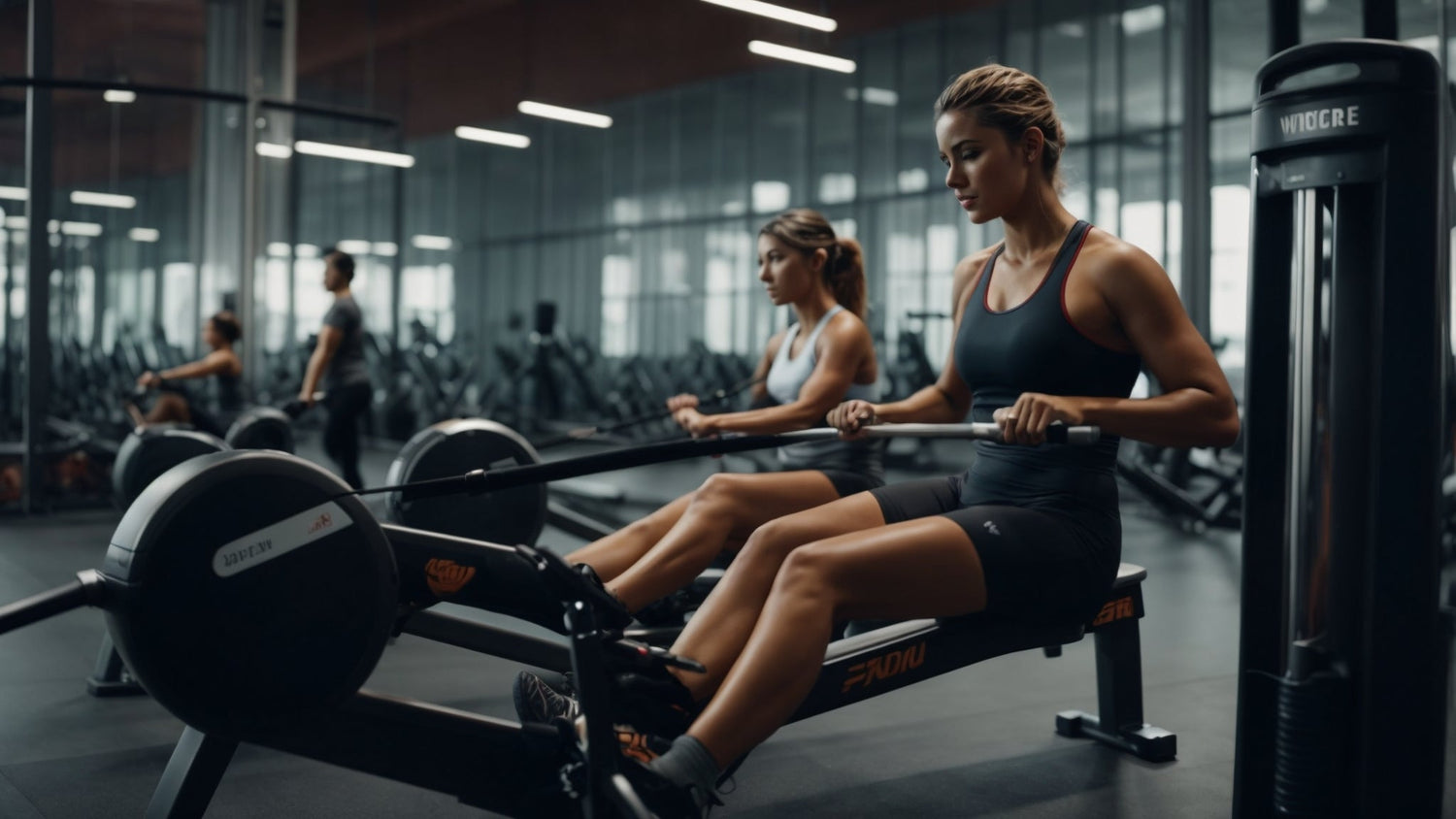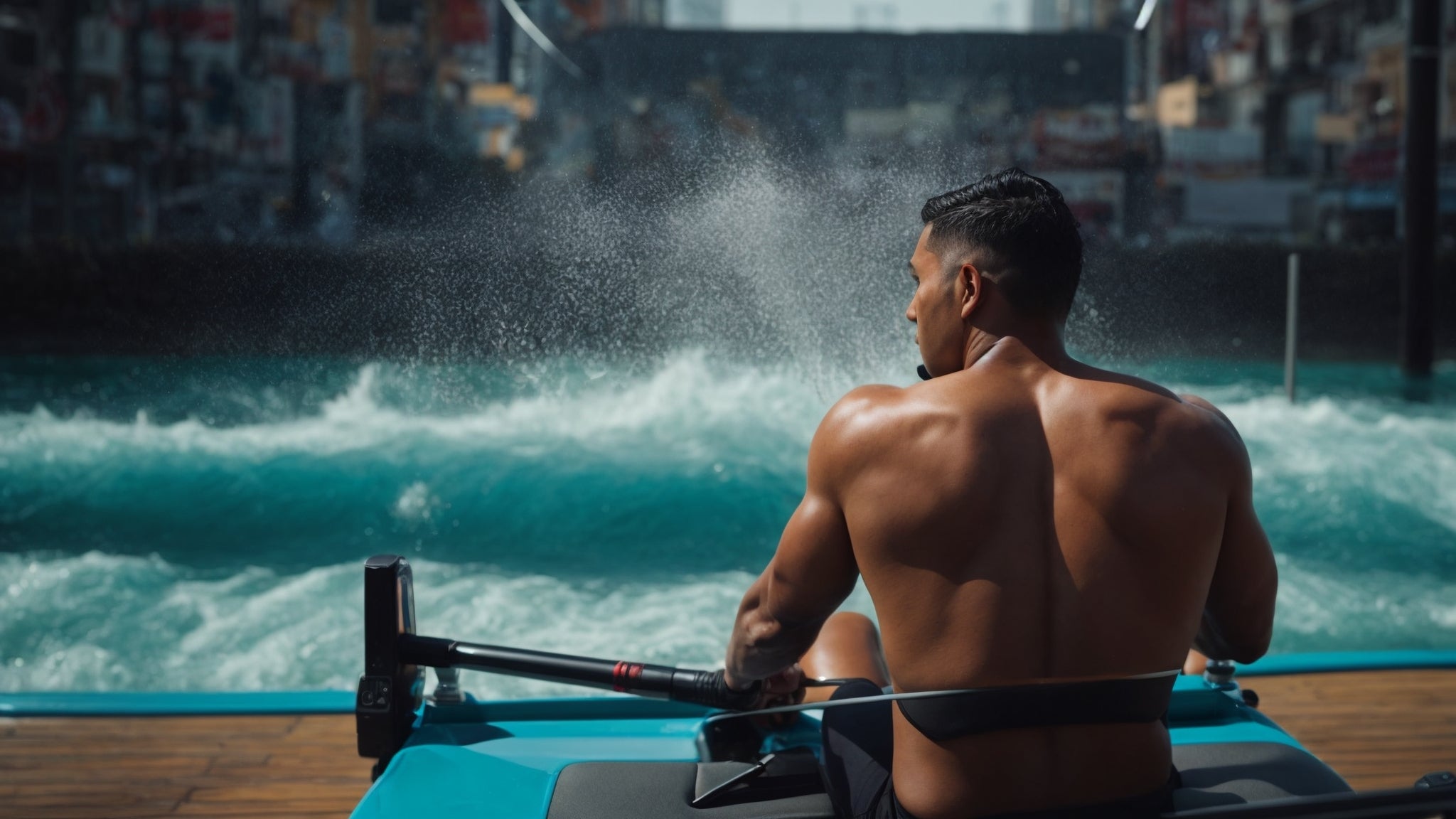Introduction
Use a Rowing machines offer a full-body workout that targets major muscle groups, making them a versatile and effective exercise tool. However, using a rowing machine correctly is crucial for maximizing efficiency and minimizing the risk of injury. This comprehensive guide will walk you through the proper technique, step-by-step, empowering you to harness the power of the rowing machine for a rewarding and injury-free experience.
Setting Up the Machine
- Adjust the Foot Straps: Secure your feet in the footrests, ensuring the straps are snug across the top of your feet. This ensures a secure and stable base for your stroke.
- Set the Resistance: If your machine has adjustable resistance, set it to a comfortable level for your fitness level. Start with a lower resistance and gradually increase it as you gain strength and endurance.
The Starting Position
- Sit on the Seat: Sit with your back straight and core engaged. This maintains good posture and prevents strain on your lower back.
- Grip the Handle: Hold the handle with both hands, using an overhand grip (palms facing you). Maintain a firm but not tense grip.
- Knees Bent: Your knees should be bent, and shins vertical, with your body leaning slightly forward from the hips. This is your starting position, also known as the 'catch'.
The Stroke Phases
The rowing stroke consists of four main phases, each requiring specific movements and muscle engagement:
- Catch: Start with your arms extended and back straight. Engage your core and keep your shoulders relaxed. This is your starting point before initiating the stroke.
- Drive: Push off with your legs, extending them fully while keeping your arms straight. As your legs extend, lean back slightly and pull the handle towards your chest, keeping your elbows close to your body. This is the power phase of the stroke, where you generate most of the force.
- Finish: At the end of the drive, your legs should be straight, your back should be slightly leaned back, and the handle should be pulled to your chest (around your sternum). Hold this position briefly. This is the peak of the stroke, where you achieve maximum power and contraction.
- Recovery: Extend your arms back out first, allowing the handle to move away from your body. Lean forward from your hips and bend your knees, returning to the starting position. This is the recovery phase, where you reset for the next stroke.
Breathing
Maintaining proper breathing is essential for endurance and maintaining a steady rhythm throughout your rowing session:
- Inhale during the recovery phase. This allows you to take in fresh oxygen as you return to the starting position.
- Exhale during the drive phase. This helps release carbon dioxide as you generate force during the stroke.
Tips for Effective Rowing
Following these tips will enhance your rowing technique and ensure a more effective and efficient workout:
- Maintain Good Posture: Keep your back straight and avoid hunching over. This prevents strain on your back and ensures proper alignment.
- Use Your Legs: The majority of the power should come from your legs, not your arms. This maximizes efficiency and reduces strain on your arms and shoulders.
- Keep a Steady Pace: Focus on a consistent rhythm rather than speed. A smooth, controlled stroke is more efficient than a jerky, fast one.
- Monitor Your Form: It can be helpful to practice in front of a mirror or record yourself to ensure proper technique. Observing your form helps identify any areas that need correction.
Cool Down and Stretch
After your rowing workout, take time to cool down and stretch your muscles, particularly in your legs, back, and shoulders:
- Cool Down: Gradually decrease the intensity of your rowing by lowering the resistance or reducing the stroke rate. This helps your body recover and prevents muscle soreness.
- Stretch: Hold each stretch for 15-30 seconds, focusing on major muscle groups engaged in the rowing motion.
Conclusion
Using a rowing machine effectively requires attention to technique and form. Start with shorter sessions to build endurance and gradually increase the intensity as you become more comfortable. Always listen to your body and consult a trainer if you're unsure about your form. With consistent practice and proper technique, you can unlock the full potential of the rowing machine for a challenging and rewarding workout.

